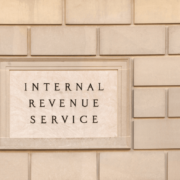SOLAR TAX CREDIT – THE DARK SIDE
Article Highlights:
- Solar Promotions
- Solar Tax Credit
- Nonrefundable Credit
- Financing Costs
- Solar Credit Phase-out
- Leasing a Solar System
There are TV ads, telemarketing phone calls and sales people at your front door all promoting the benefits of solar power, and one of the key considerations and a frequently mentioned benefit is the 30% federal tax credit.
What isn’t included in the ads – and something most potential buyers are unaware of – is that the solar credit is a nonrefundable tax credit, meaning the credit can only be used to offset your tax liability. This can come as a very unpleasant surprise and is often a financial hardship when the purchaser of a home solar system finds out that the credit is nonrefundable and that they won’t get the full credit.
For example, a married couple with three children, all under age 17, and an annual income of $78,000 installed a solar system costing $20,000 in 2018, expecting a $6,000 credit on their tax return. Their standard deduction in 2018 is $24,000, leaving them with a taxable income of $54,000. The tax on the $54,000 is $6,099. They are also entitled to a $2,000 child tax credit for each child, which reduces their tax liability by $6,000 and results in a tax liability of $99. Since the solar credit is nonrefundable, the only portion of the credit they can use is $99, not the $6,000 they had expected.
On top of that, the family is probably financing the solar system, which significantly adds to the system’s cost. If the entire $20,000 cost were financed by a 5% home equity loan for 20 years, then the interest on that loan over its term would be $11,678, bringing the total cost of the solar system to $31,678 or a monthly cost of $132.
Some municipalities even allow home energy improvements to be financed through the property tax system by adding the payments to the quarterly or semi-annual property tax bills. Interest rates on these arrangements are generally higher than home equity loans, reaching levels of 9 to 10%. If the loan in our prior example would have been at 9%, then the interest on the loan over 20 years would be $23,187, bringing the total cost to $43,187 or a monthly cost of $180. It is also a common misconception that solar system payments added to the property tax bill can be deducted as property taxes. That is incorrect; however, the interest portion of the loan payment is generally deductible as home acquisition debt interest. The lender should supply a loan amortization schedule indicating the annual interest amount.
The unused credit does carry over from year to year as long as the solar energy credit is available. Currently, the credit is being phased out, and 2021 is the last year it can be claimed. Furthermore, the credit percentage rate is being phased down, with the 30% continuing through 2019 and then dropping to 26% in 2020 and 22% in its final year.
In lieu of purchasing a solar system, some homeowners opt to lease a system. This arrangement is not eligible for the solar credit.
As you can see, there is a lot to consider before making the final decision to install a solar system. Is it worth it, and is it the right thing financially for you? Please call for a consultation before signing any contract to make sure a solar system is appropriate for you.







Leave a Reply
Want to join the discussion?Feel free to contribute!